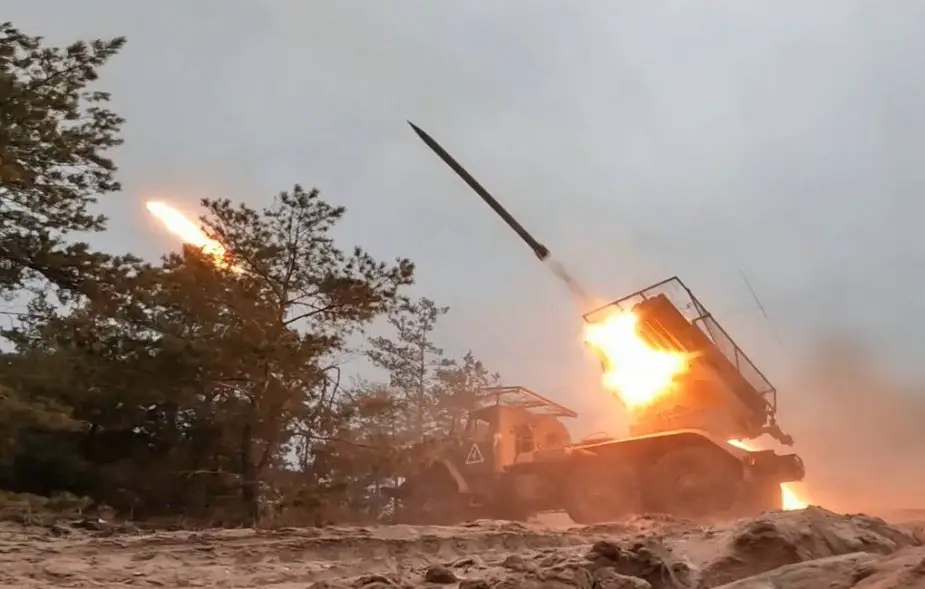According to the latest assessments from Norwegian military intelligence, the balance in the conflict in Ukraine appears to be shifting in favor of Russia. The annual report "Focus 2024" from E-tjenesten, released on February 12, 2024, indicates that Russia is strengthening its military power with a war economy and significant investments in its arms industry.
Follow Army Recognition on Google News at this link

Russian BM-21 Grad MLRS in Ukraine in 2023 (Picture source: Russian MoD)
According to the report, Russia is currently in a position of strength, potentially able to mobilize three times more troops than Ukraine. This raises concerns about the Ukrainian forces' ability to defend themselves and regain initiative in the conflict without substantial Western support in armaments. Russia may be able to restore its combat power to pre-2022 levels within three to five years after the war ends. These figures echo the statement by the Danish Defense Minister, suggesting that Russia could potentially attack a NATO country within the next three to five years.
However, American military aid, crucial for bolstering Ukraine's defense capabilities, is on hold due to a lack of agreement in Congress for its funding. This situation not only hampers the delivery of new weapons and ammunition but also compromises the maintenance of already provided equipment. Additionally, Ukrainian forces are facing challenges in replenishing their ranks and maintaining deployed troops, especially after the replacement of their chief of staff.
E-tjenesten predicts a Russian offensive intensification in Ukraine in 2024, supported by increased arms and equipment production, as well as Russian force reorganization and improved logistical support. This offensive could be bolstered by Russia's growing diplomatic and economic ties with non-Western countries such as China, Iran, and North Korea, as well as cooperation with Gulf States to bypass Western sanctions.
Meanwhile, Ukrainians are grappling with significant challenges in ammunition supply, particularly in anti-aircraft defense and artillery. Shortages of crucial ammunition, including artillery shells, could compromise their defensive and offensive capabilities, delaying any potential counter-offensive.
As tensions persist and Russia strengthens its advantage in Ukraine, the situation remains uncertain regarding the conflict's outcome and its impact on the region and beyond. Analysts emphasize the crucial importance of continued Western support to strengthen Ukraine's defense capabilities and contain Russian expansion in the region.
The conflict in Ukraine remains pivotal for the trajectory of the Russian military, as it operates within a wartime economic framework and experiences unprecedented levels of defence expenditure. This strategic shift has enabled the Russian defence industry to receive substantial additional resources, facilitating the sustained production of ammunition and other military supplies necessary for the ongoing hostilities in Ukraine throughout 2024.
Furthermore, the war in Ukraine continues to be a driving force behind Russian defence spending. In 2022, there was a significant year-on-year increase of 16.5 percent in real terms, followed by an additional 27 percent increase from 2022 to 2023. Russia's defence budget for 2023 was planned at USD 70.5 billion, representing 20 percent of total federal spending and 4 percent of the gross domestic product (GDP).
This heightened militarization underscores the critical role that the conflict in Ukraine plays in shaping the future trajectory of Russian armed forces. The implications of these developments on the geopolitical landscape remain uncertain, with ongoing concerns about the resolution of the conflict and its broader ramifications.
News Russia Ukraine War















